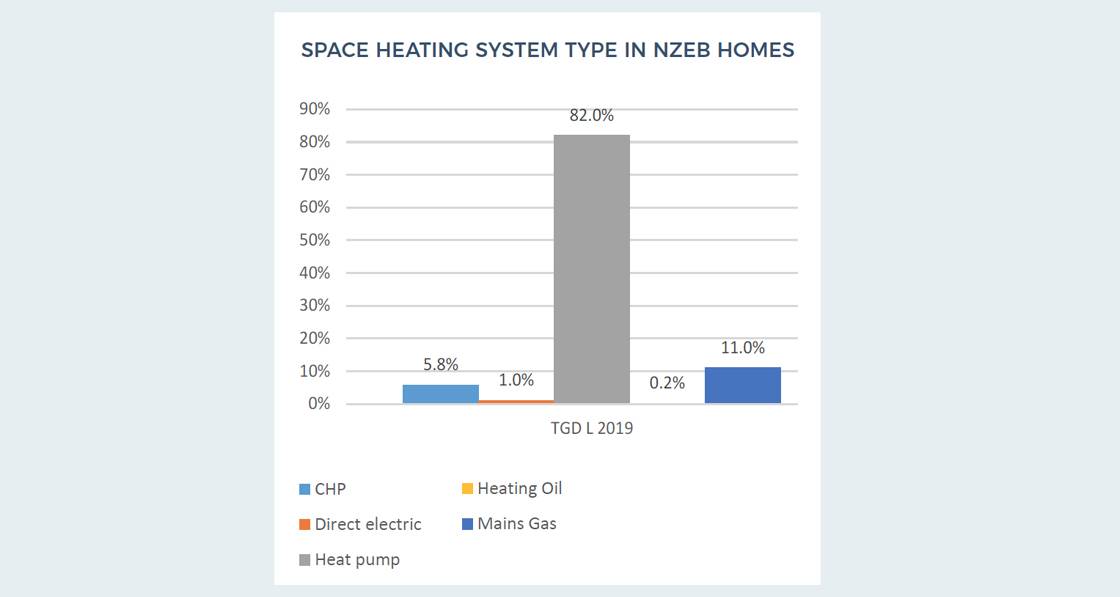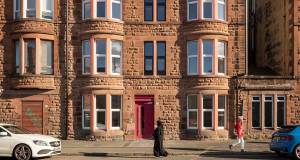
- NZEBs
- Posted
One in four homes failing to meet NZEB
Almost a quarter of new nearly zero energy building (NZEB) homes may be non-compliant with Part L of the regulations, new analysis by Passive House Plus has revealed.
This article was originally published in issue 39 of Passive House Plus magazine. Want immediate access to all back issues and exclusive extra content? Click here to subscribe for as little as €10, or click here to receive the next issue free of charge
In total, 23.5 per cent of new homes built to date under the NZEB regulations have failed to meet one or more targets to demonstrate compliance.
While the compliance picture looks strong among targets such as the energy performance coefficient (EPC), carbon performance coefficient (CPC) and renewable energy ratio (RER), evidence of non-compliance becomes more prevalent in some building fabric targets including airtightness test results and U-values – in particular for walls and external doors.
One factor in the lack of compliance may be the fact that some homes appear to have been voluntarily built to the new standard, including homes where the year of construction was before 2020. The NZEB regulations (Part L 2019) came into force for new homes where a planning application was submitted from November 2019 onwards, while homes with earlier planning approval were permitted to be built to 2011 standards if they were substantially complete by November 2020. The non-compliance drops to 20.3 per cent if only homes where the year of construction was 2020 or later are counted.
Up until recently, SEAI’s National BER Research Tool did not include the EPC, CPC or RER scores for buildings, but the tool was updated to include these elements in response to a request from Passive House Plus. The targets under TGD L 2019 include a maximum permitted EPC of 0.30 and CPC of 0.35 – targets which respectively represent 30 per cent and 35 per cent of the energy consumption and carbon emissions totals a given dwelling would have achieved if built to the 2002 building regulations, with a standard efficiency gas boiler. Just over four per cent of BERs to date for homes built to 2019 Technical Guidance Document (TGD) L failed to meet the 0.30 EPC target, with an average EPC score of 0.34.
Meanwhile, 10.5 per cent of homes failed to meet the backstop U-value for external walls, with 1.7 per cent failing to meet backstop floor U-values. Almost 97 per cent of homes met the sloping roof U-value of 0.16, with a further 3.1 per cent meeting or exceeding the flat roof target of 0.20, although the BER research tool doesn’t identify roof type, meaning compliance cannot be definitively identified in these cases. In total, 1.9 per cent of windows and 7.9 per cent of external doors failed to meet the backstop U-value of 1.4.
Data issues mean it’s not yet possible to definitively say what percentage of homes meet the RER target of 0.2 (which means that 20 per cent or more of the energy needs counted within the BER are met from renewable sources). This is because 18.8 per cent of BERs include no data in this field, in spite of the fact that almost all feature heat pumps. Only 0.01 per cent of homes with RER values fail to meet the 0.2 target.
Similarly, data issues acknowledged by SEAI mean that airtightness test results were not transferred into the research tool in 9.9 per cent of cases, though Passive House Plus understands the information was included in the publication of the BERs. However, in 1.9 per cent of cases, an airtightness test was not done, and in 0.6 per cent of cases a non-compliant value of above 5 m3/hr/m2 at 50 Pascals was used.
By the end of September, 7,522 new homes feature BERs for homes assessed against 2019 TGD L. The average primary energy score is 41.3 kWh/m2/yr, a mid A2 rating. Space heating is provided by heat pumps in 82 per cent of cases, with gas boilers at 11 per cent, combined heat and power (CHP) at 5.8 per cent, direct electric at 1 per cent and oil boilers at 0.2 per cent. Mechanical extract ventilation is the dominant ventilation method at 50.8 per cent, followed by heat recovery ventilation at 20.4 per cent, natural ventilation at 17.7 per cent, ventilation via exhaust air heat pumps in 9.9 per cent of cases, and positive input ventilation at 1.2 per cent. Almost one quarter (24.5 per cent) of naturally ventilated homes had airtightness results of below 3 m3/hr/m2 at 50 pa, indicating non-compliance with Part F of the building regulations.
The average airtightness test result is 2.58 m3/hr/m2 at 50 Pa. Average U-values are 0.17 (walls), 0.12 (for both roofs and floors), 1.17 (windows) and 1.15 (external doors).
As previously reported, self-build homes are underreported in the BER data, with Passive House Plus estimating that between two thirds and three quarters of self-builders fail to comply with the legal obligation to obtain a BER prior to occupancy.







